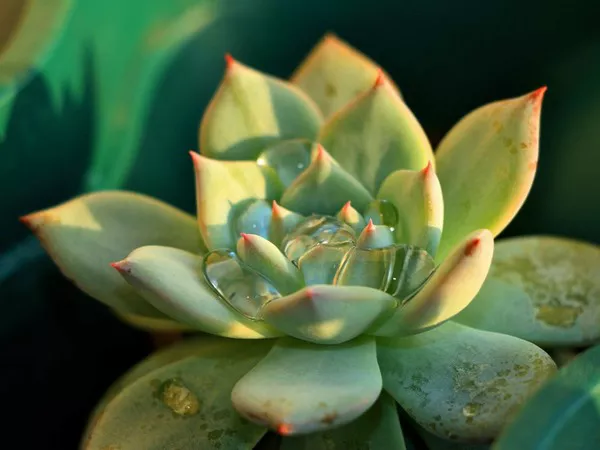Succulents have gained immense popularity in recent years, and their unique and stunning appearance has made them a favorite among plant enthusiasts. While succulents are known for their fleshy leaves and ability to store water, it is a delightful surprise when these plants produce flowers. Flowering succulents add an extra dimension of beauty and charm to their already striking appearance. But what does it mean when a succulent flowers? Let’s explore this intriguing phenomenon in more detail.
Life Cycle of Succulents
Understanding the flowering of succulents requires a basic understanding of their life cycle. Succulents, like other plants, go through a reproductive process that involves the production of flowers, pollination, and the formation of seeds. The life cycle of succulents can vary depending on the species and environmental conditions, but the general pattern is as follows:
Vegetative Growth: Succulents start their life as seeds or cuttings and go through a period of vegetative growth. During this stage, the plant develops roots, stems, and leaves, and focuses on storing water in its tissues.
Maturity: As a succulent reaches maturity, it begins to allocate energy towards reproduction. This is when the plant may produce flowers.
Flowering: When conditions are favorable, succulents produce flowers. Flowering is a crucial part of the reproductive process, as it attracts pollinators such as bees, butterflies, and birds.
Pollination: Once the flowers have opened, they release pollen, which is transferred from the male reproductive organs (stamens) to the female reproductive organs (pistils). This can occur through self-pollination or with the help of pollinators.
Seed Formation: If pollination is successful, the flower will develop into a fruit or seed pod. The seeds carry the genetic material required to produce new succulent plants.
Seed Dispersal: Eventually, the seeds are dispersed by various means, such as wind, water, or animals. They may settle in new locations and germinate under suitable conditions, continuing the life cycle of the succulent.
The Significance of Flowering Succulents
The flowering of a succulent is significant for several reasons. Firstly, it indicates that the plant has reached maturity and is in a state of reproductive readiness. Flowering is a natural and expected part of the life cycle of many plants, including succulents.
Secondly, flowering adds beauty and aesthetic appeal to succulents. While the unique shapes and colors of succulent leaves are captivating in themselves, the addition of flowers creates a striking contrast and further enhances their visual appeal. Flowers can range in size, shape, and color, depending on the species, and can create a breathtaking display when a succulent is in bloom.
Thirdly, flowering succulents attract pollinators. The vibrant colors and enticing fragrances of succulent flowers serve as beacons to bees, butterflies, and other insects, inviting them to collect nectar and pollen. This interaction between succulents and pollinators is vital for the exchange of genetic material and the continuation of plant species.
Lastly, flowering succulents can provide an opportunity for propagation. If you are interested in expanding your succulent collection, you can collect the seeds produced by the flowering plant and germinate them under suitable conditions. This allows you to grow new succulent plants and enjoy the rewarding experience of nurturing them from seedlings.
Factors Affecting Succulent Flowering
Several factors can influence the flowering of succulents. Here are some of the key factors to consider:
Age: Succulents generally need to reach a certain level of maturity before they can produce flowers. This can vary depending on the species, with some succulents flowering within a few years and others taking several years to mature.
Light: Adequate light is essential for flowering in succulents. Most succulents thrive in bright, indirect light and may require several hours of sunlight per day to initiate and sustain flowering. Insufficient light can result in weak or no flowers.
Temperature: Succulents have specific temperature requirements for flowering. Some species may require cooler temperatures to trigger flowering, while others prefer warmer conditions. Understanding the temperature preferences of your succulents can help encourage flowering.
Season: Many succulents have specific flowering seasons. Some may flower during the spring or summer, while others may bloom in the fall or winter. Knowing the flowering season of your succulents can help you anticipate and appreciate their blossoms.
Environmental Conditions: Succulents thrive in well-draining soil and require proper watering and fertilization. Providing the right growing conditions, including suitable soil, appropriate watering frequency, and balanced fertilization, can support the overall health of the plant and promote flowering.
Conclusion
When a succulent flowers, it signifies a significant milestone in its life cycle. Flowering is a natural part of the reproductive process, indicating maturity and readiness for reproduction. Flowering succulents not only add beauty to their surroundings but also attract pollinators and offer the opportunity for propagation. By understanding the factors that influence succulent flowering, such as age, light, temperature, season, and environmental conditions, you can enhance the chances of your succulents blooming and enjoy the unique charm they bring to your plant collection.


